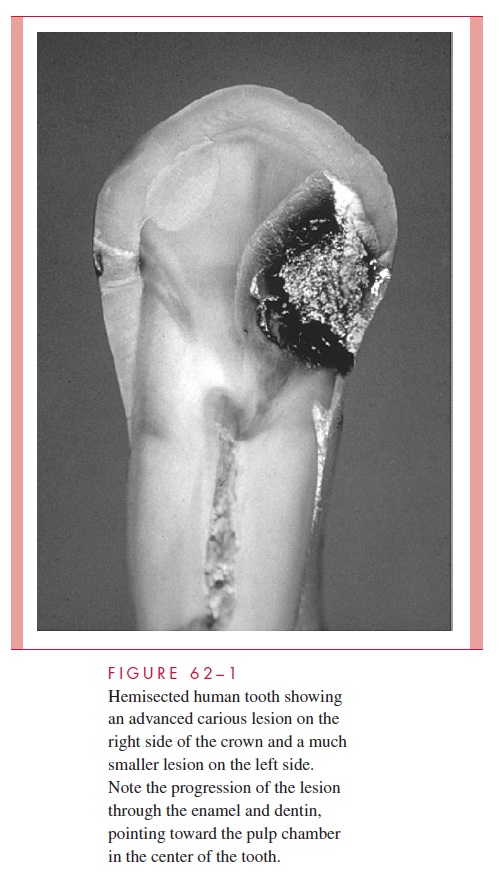Chapter: Medical Microbiology: An Introduction to Infectious Diseases: Dental and Periodontal Infections
Dental and Periodontal Infections
Dental caries, chronic periodontitis, and the sequelae of these two diseases constitute the majority of oral and dental infections and the cause of tooth loss. In both, the source of the causative bacteria is the microbial plaque that forms on the teeth. Thus, although dental caries and chronic periodontitis are distinctly different, the prevention and/or halting of the progression of these diseases relies on the elimination of dental plaque from the tooth surfaces. In addition to causing caries and chronic periodontitis, the bacteria of dental plaque play a role in more aggressive forms of periodontitis and necrotizing periodontal diseases.
Dental plaque is a soft, adherent dental deposit that forms as a result of bacterial colonization of the tooth surface. It is rather insoluble, as well as adherent, and thus resists removal by water spray or mouth rinsing. Only more vigorous means such as tooth brushing and flossing between the teeth remove it. It consists almost entirely of bacterial cells (1.7 x1011 cells/g wet weight).
Dental caries is the progressive destruction of the mineralized tissues of the tooth,primarily caused by the production of organic acids resulting from the glycolytic metabolic activity of plaque bacteria. The basic characteristic of the carious lesion is that it progresses inward from the tooth surface, either the enamel-coated crown or the cementum of the exposed root surface, involving the dentin and finally the pulp of the tooth (Fig 62–1). From there, infection can extend out into the periodontal tissues at the root apex or apices.

Plaque-induced periodontal disease encompasses two separate disease entities: gingivitis and chronic periodontitis. These diseases are believed to be related, in that gingivitis, although a reversible condition, is thought to be an early stage leading ultimately to chronic periodontitis in the susceptible subject. The term gingivitis is used when the inflammatory condition is limited to the marginal gingiva and bone resorption around the necks of teeth has not yet begun. Chronic periodontitis is used to connote the stage of chronic periodontal disease in which there is progressive loss of tooth support due to resorption of the alveolar bone and periodontal ligament. Periodontitis can also lead to periodontal abscess when the chronic inflammatory state around the necks of the teeth becomes acute at a specific location.
Chronic periodontitis, formerly referred to as adult periodontitis, is responsible for most tooth loss in people greater than 35 to 40 years of age. The term chronic indicates that the disease progresses slowly and results in the progressive destruction of the supporting tissues of the tooth (periodontal ligament and alveolar bone) from the margins of the gingiva toward the apices of the roots of the teeth. Although the accumulative effects of the disease make it appear chronic in nature, the disease may occur as a series of acute episodes separated by quiescent periods of indeterminate duration.
More aggressive forms of periodontitis result in more rapid loss of tooth support. Such aggressive types of disease have been described as localized aggressive periodontitis, which occurs in circumpubertal adolescents (formerly called localized juvenile periodontitis), and generalized aggressive periodontitis, which occurs in young adults (formerly referred to as rapidly progressive or early-onset periodontitis). These diseases are thought to be caused by plaque organisms different from those responsible for chronic marginal periodontitis and/or an altered host resistance to the disease.
Related Topics